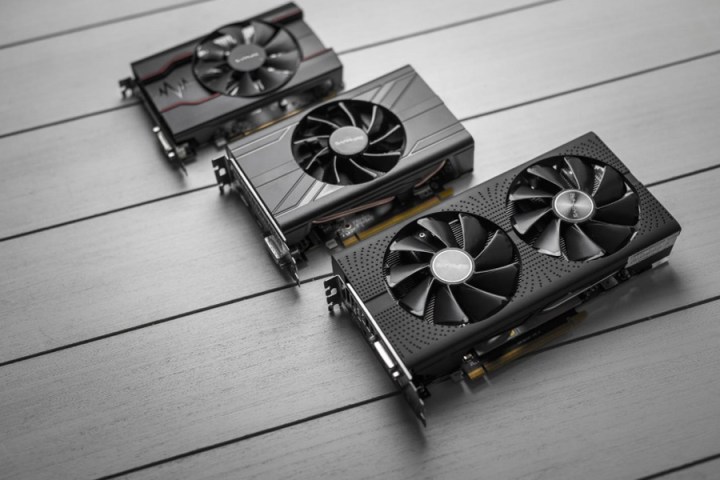
With margins so low in the graphics card game, the way to make any money is through volume sales. That’s why you’ll rarely find a segment of the market without a bespoke solution and to that end, Sapphire is spreading its offerings as widely as possible. The Pulse line will nestle itself behind the more premium Nitro+ Sapphire cards, looking to take on an audience that may have opted for a competitor otherwise.
The new graphics cards will all be based around AMD’s new 500 series Polaris graphics processors (GPU), including the RX 580, 570, 570 ITX and the 550. They will all maintain the same high-end components as the Nitro+ range, according to Sapphire (via PCPer). That means the same “black diamond” chokes, solid capacitors, and fuse protection systems will all be present on the PCB.
The coolers won’t be quite as impressive, but that doesn’t mean they won’t be capable. The higher-end RX 580 and 570 will make use of dual-fan air coolers, while the lower-end models will have a single fan. All, however, will have aluminium backing plates for added passive cooling.
The weaker cooling solution does mean that the clock speeds can’t be quite as aggressive as the Nitro+ cards. Although the Pulse RX 580 does have the same 2,304 stream processors as the Nitro+ version, its clock speed is 1,366MHz, rather than 1,450MHz.
The Pulse RX 570 has a core clock of 1,284MHz when boosted, while the ITX variant runs at 1,244MHz. The RX 550 drops things down to 1,206MHz.
The only other difference between the two ranges of Sapphire’s 500 series GPUs, is that the Pulse cards don’t have any form of LED lighting, which, if you aren’t running a system with a side window, could be a good way to save some money. Indeed most of the new cards are around $20 cheaper than their Nitro+ counterparts.
The cards are said to be shipping out now and will be available at retailers in the very near future.




